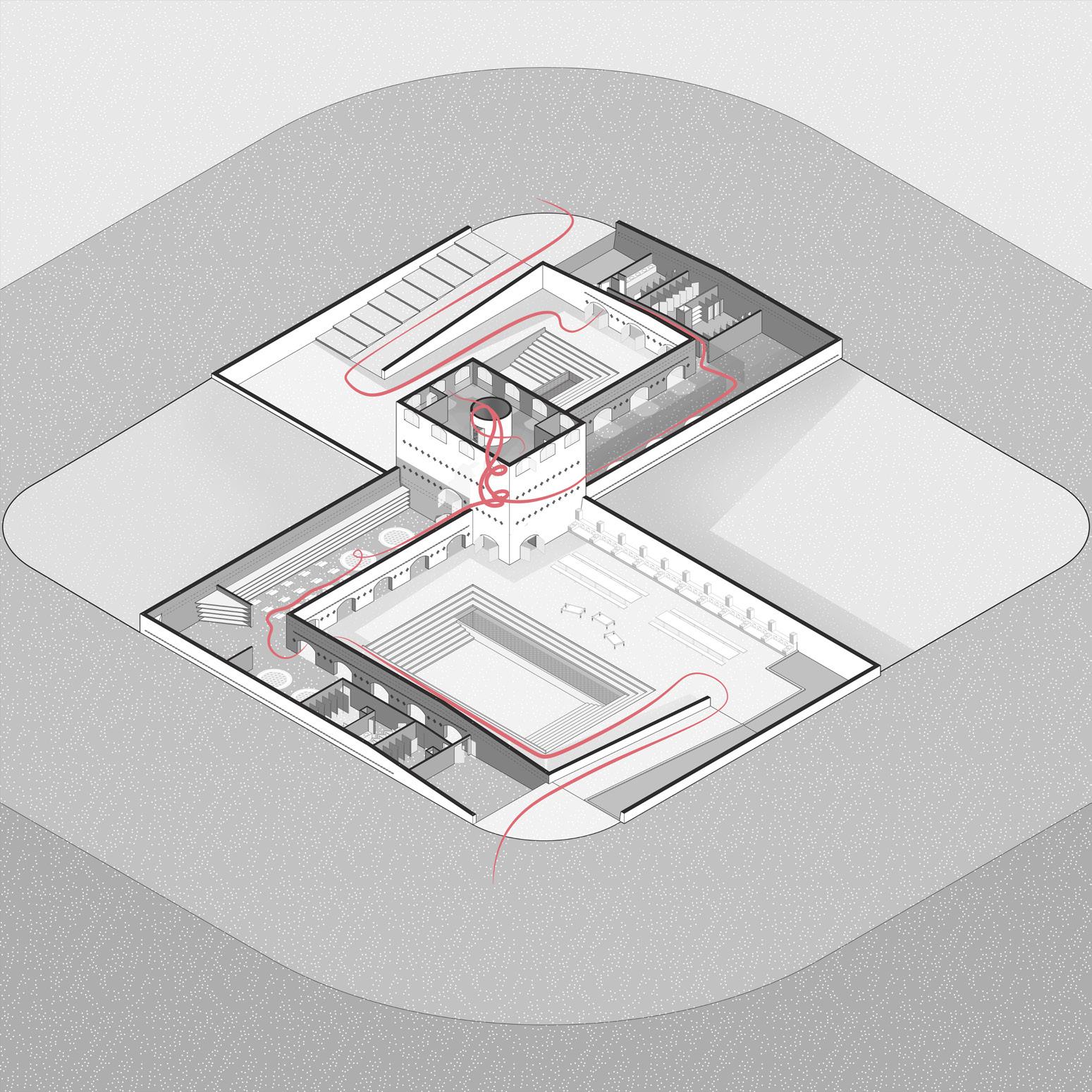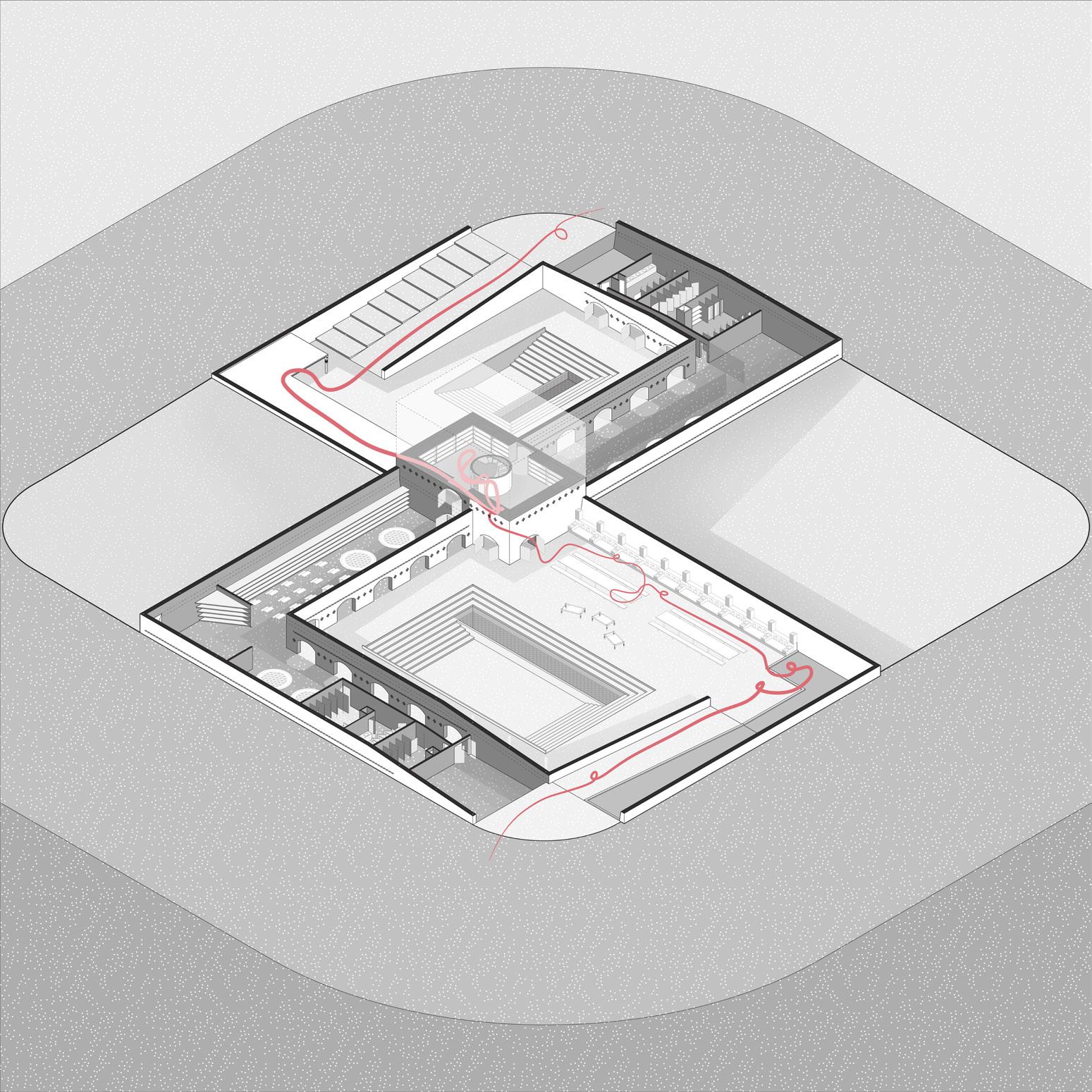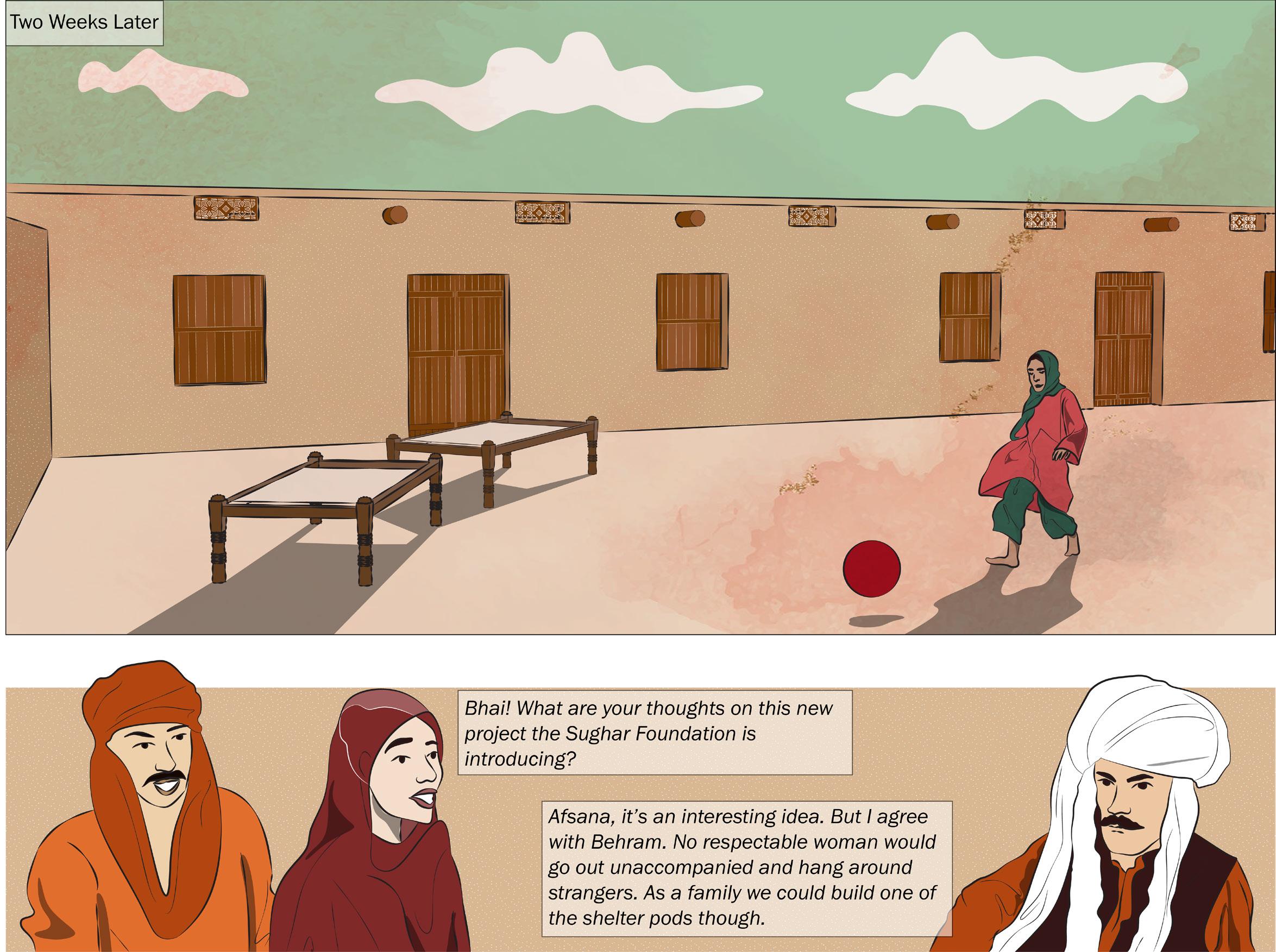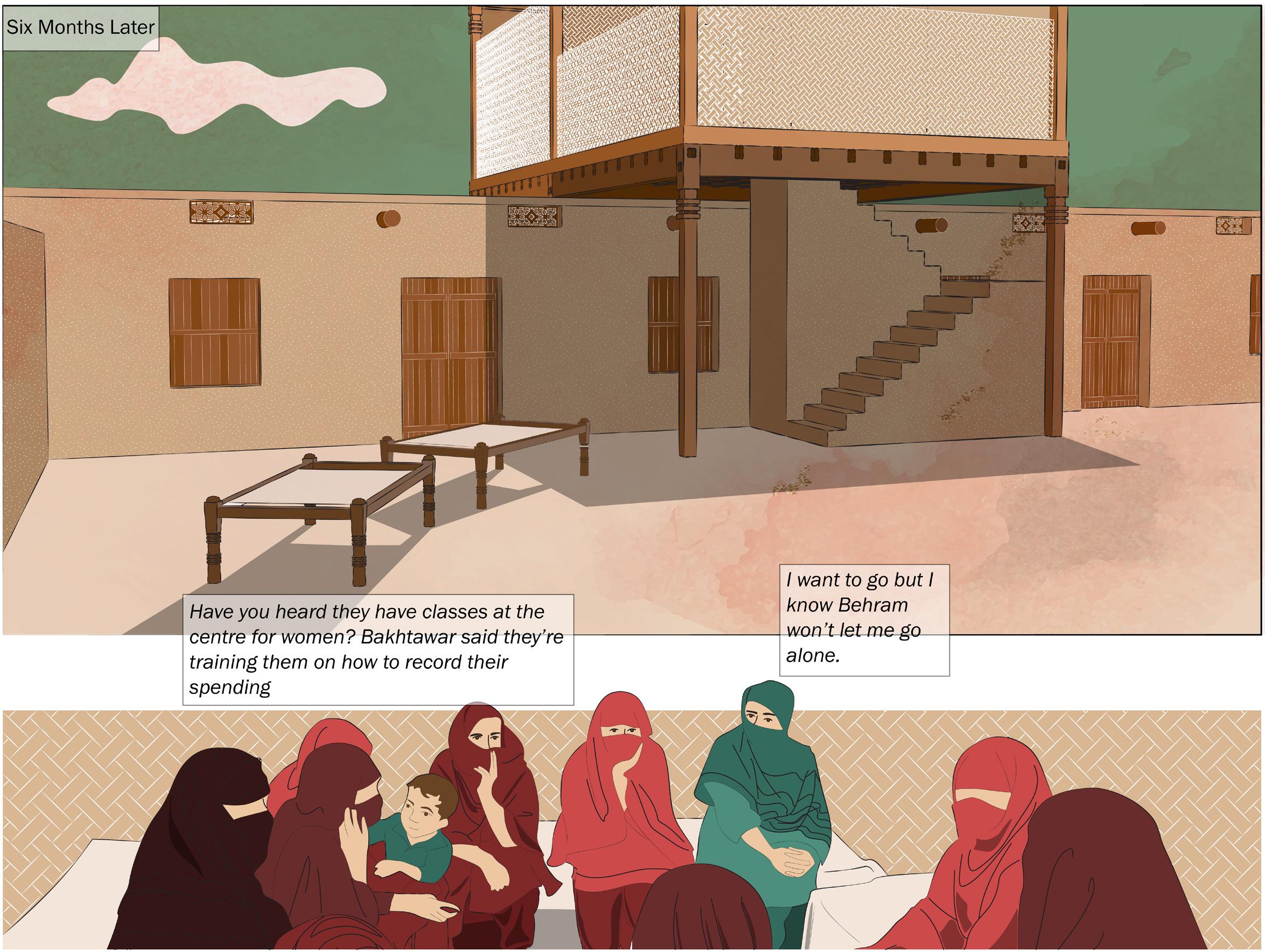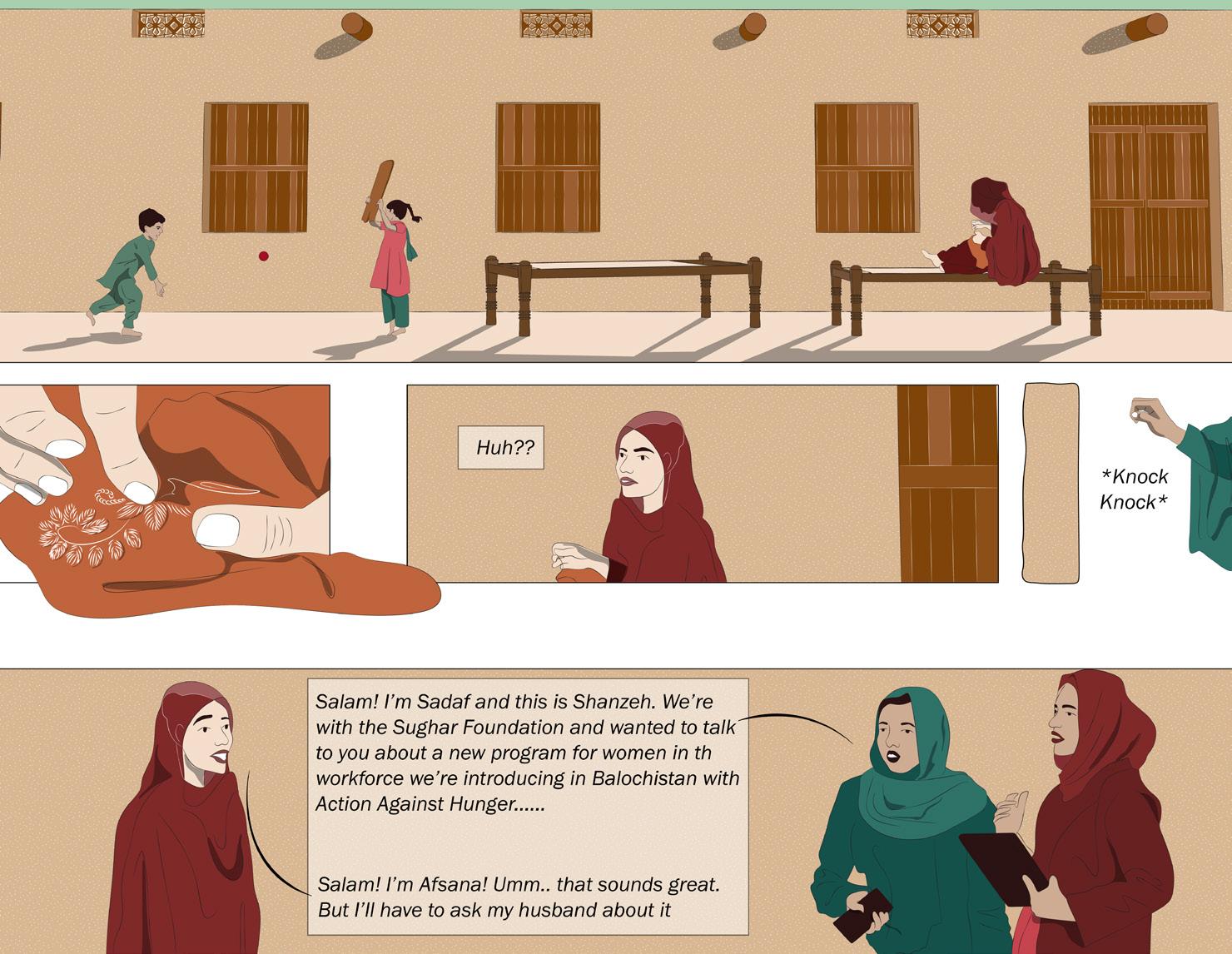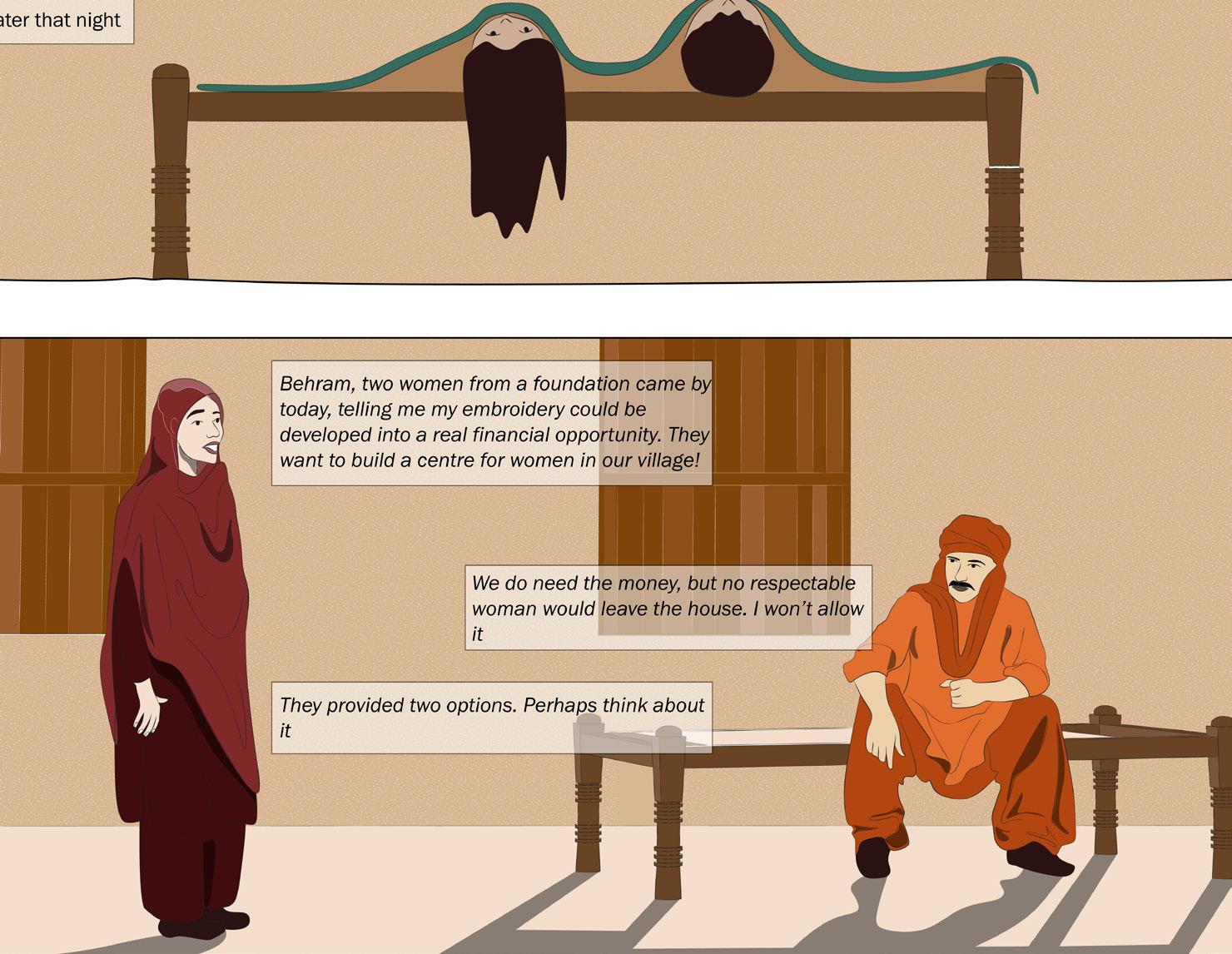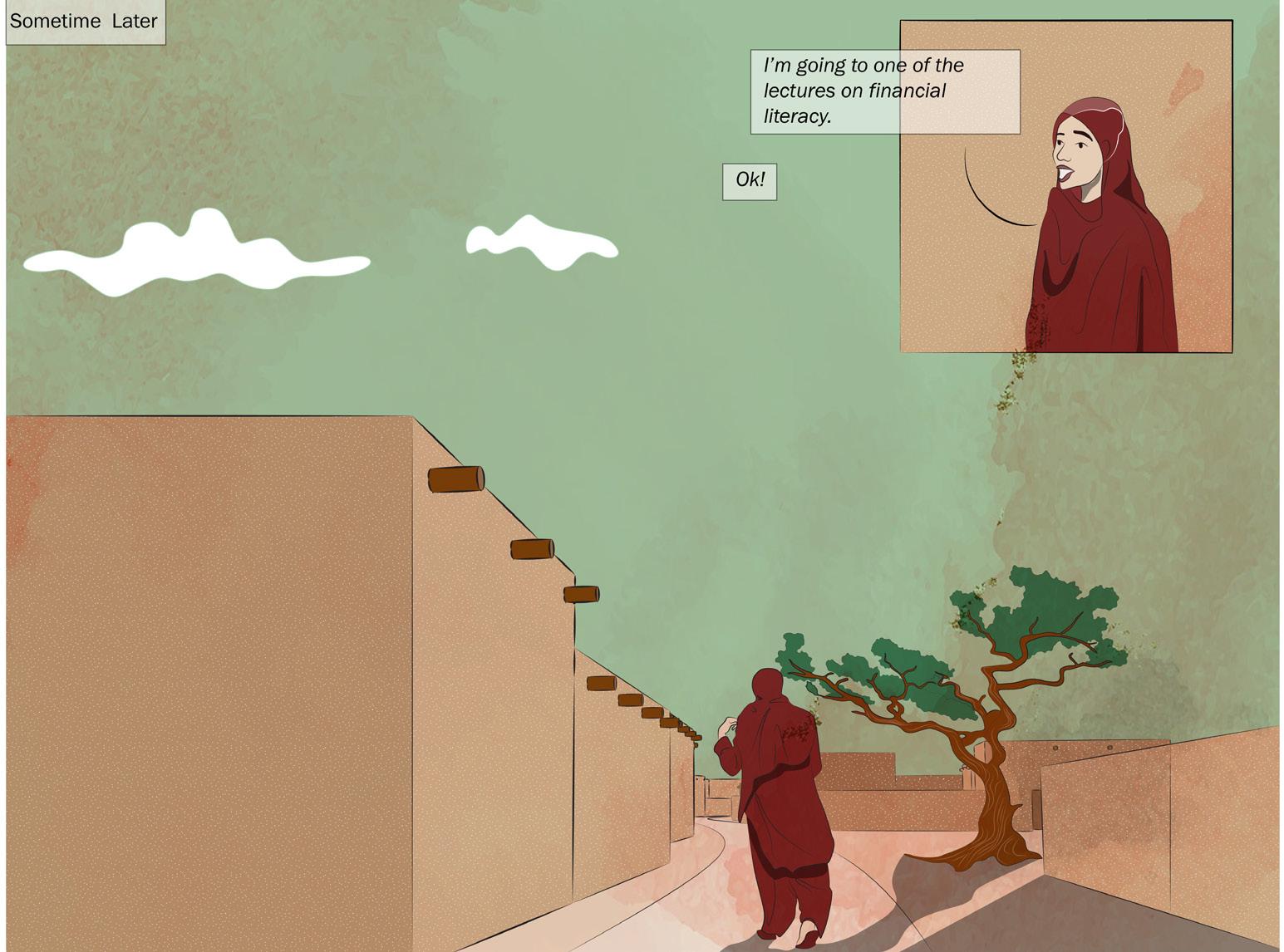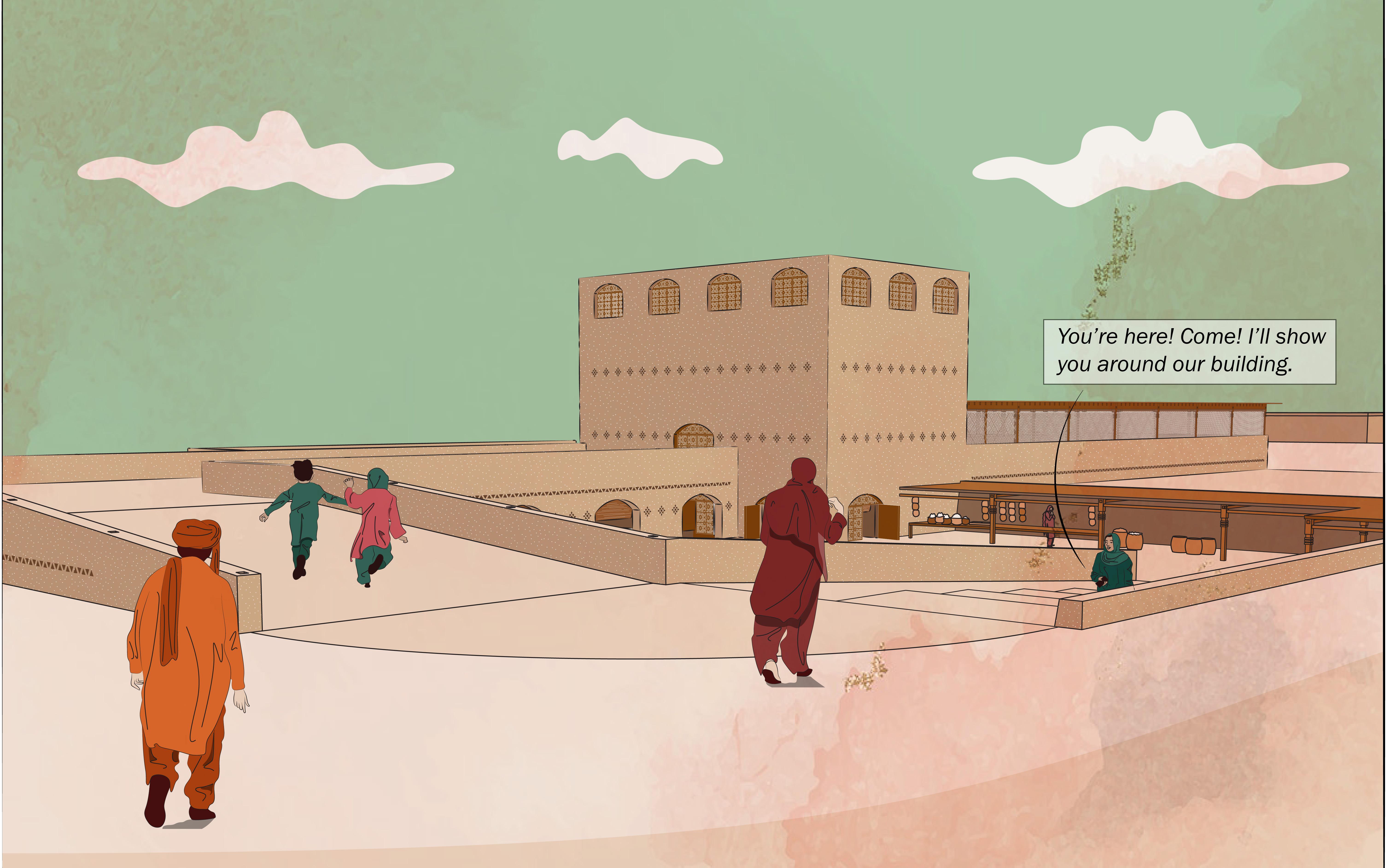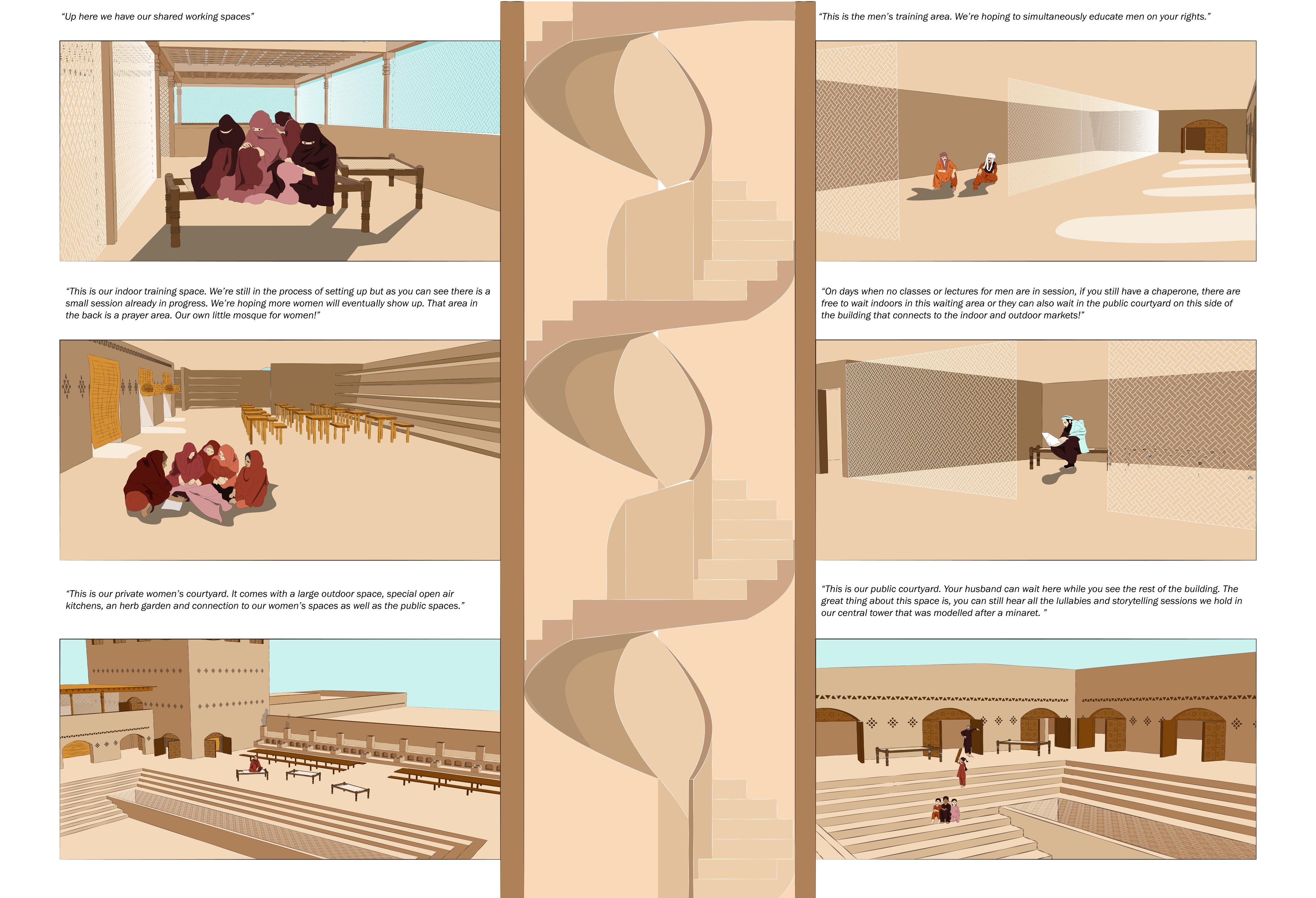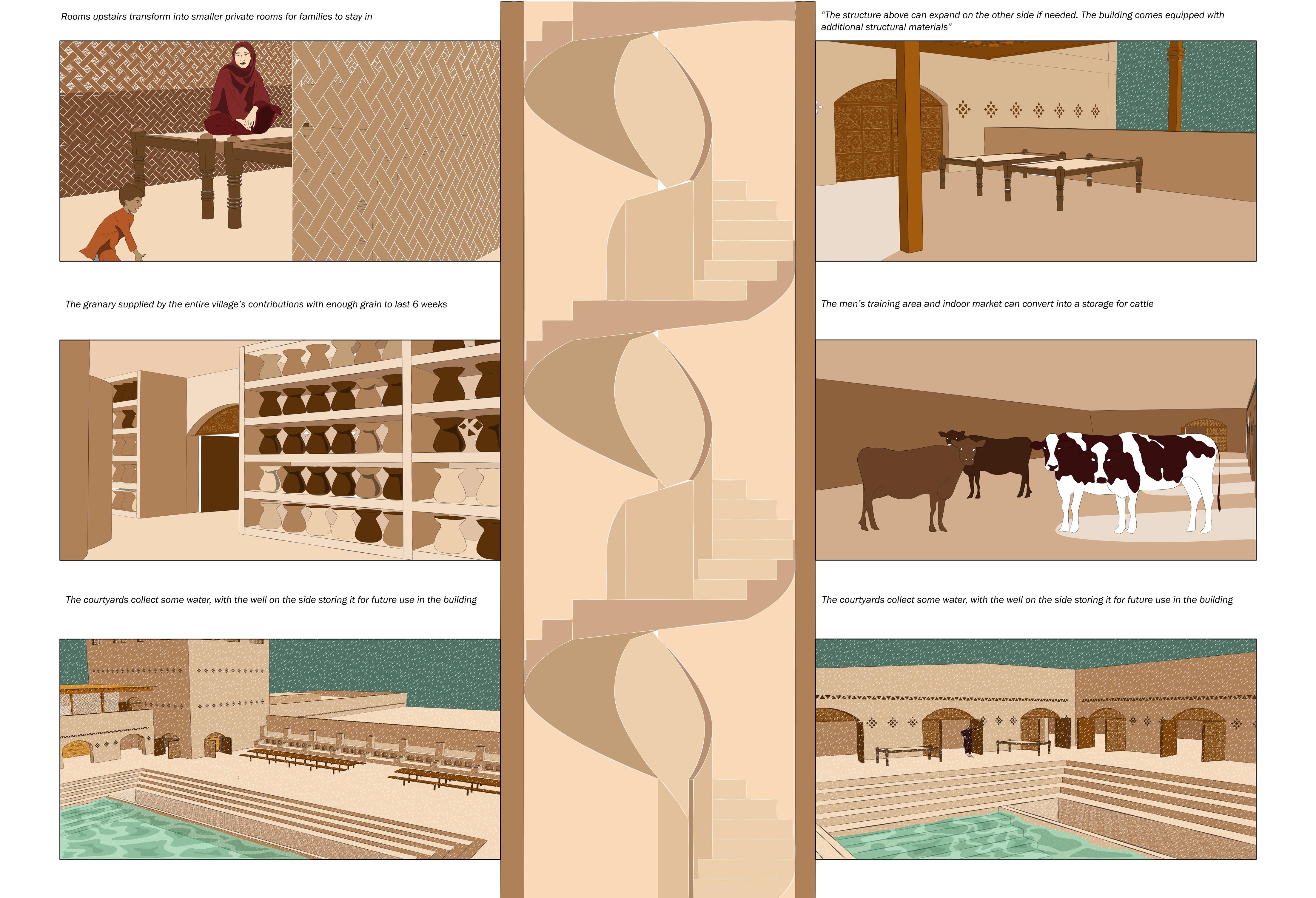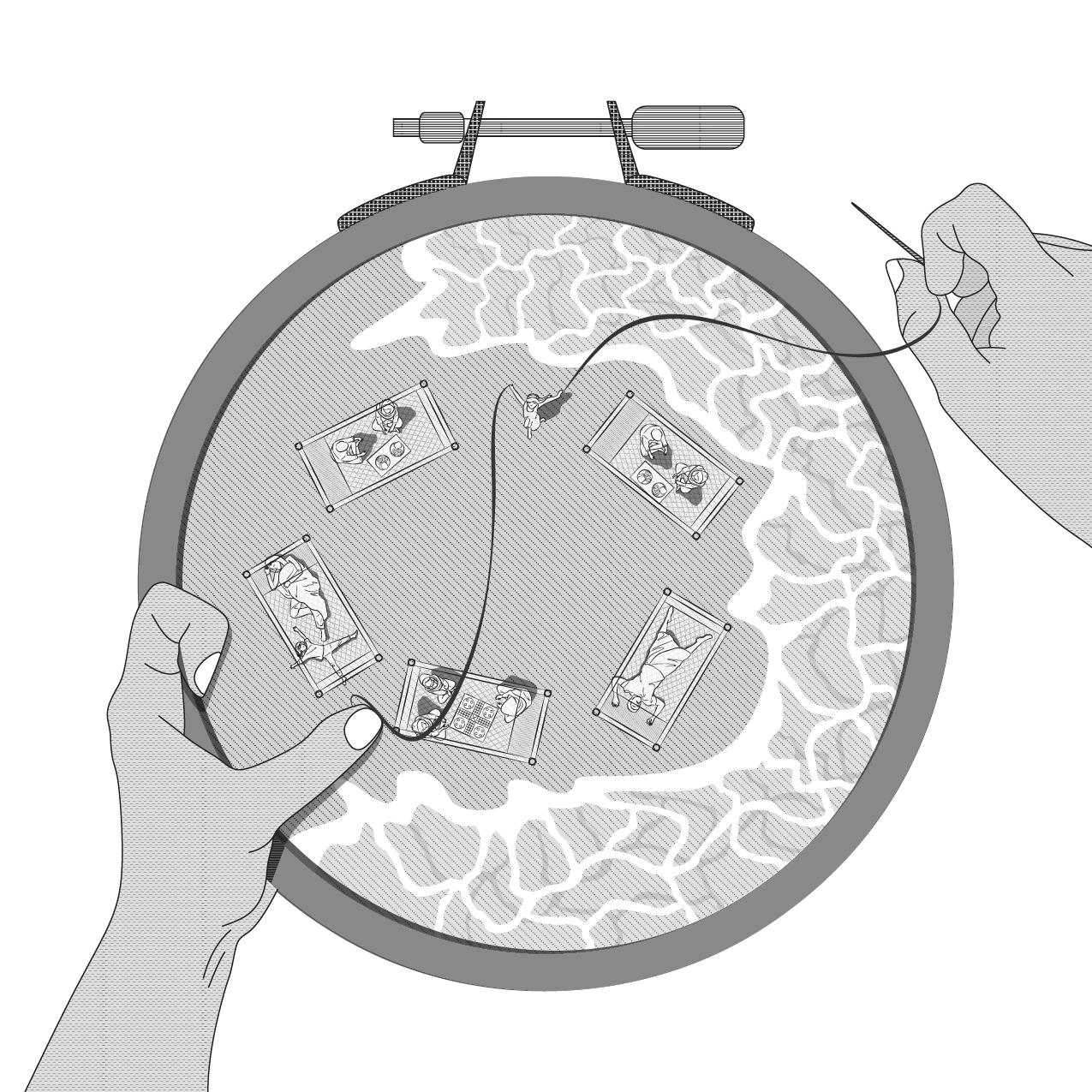
3 minute read
WEAVING A COMMUNITY
Balochistan has historically been a blind spot for the Pakistani government; due to its negligence, Baloch women suffer the consequences of disenfranchisement with limited economic growth and low literacy rates. Despite Baloch women making significant cultural and financial contributions, they are still the most vulnerable members of society. In August 2022, the federal government’s indifference resulted in astronomical levels of damage in Baloch villages during recent historically unprecedented levels of flooding. The project proposes a newly imagined typology for a Women’s Vocational Centre that transforms into a Flood Relief Shelter for the entire village during the rainy season. In doing so, it builds on existing networks and uses an ongoing crisis to attempt to simultaneously solve it and gender issues in rural society.
The project was a culmination of the effects of the ongoing climate crisis in Pakistan, the role of women in Pakistani society and research done in the refugee camps in Bangladesh. Research into this raised a series of concerns tied to several vulnerabilities that were all linked to one another, and in many ways making each one worse: Ethnic, Socioeconomic, Climatic, Culture and Gender. My proposal is a prototype based on creating networks and spaces that can address these vulnerabilities by placing women at the forefront of the project. The proposal intends to function at two scales. At the larger scale it creates a women led network across the province. This network exists through the smaller scale where each village houses a Women’s Vocational Centre/Emergency Shelter. The project is intended to provide a space where women are able to further develop their skills while being educated and trained in financial literacy in conjunction with working on their products. Through this larger network, they can connect with other individuals and be trained in other areas of interest, while also attaining financial independence by having the autonomy to sell their products on their own terms. Additionally, as a space run by women that provides safety during flood, it also highlights the important role women play in society in a more tangible way through this physical space.
Advertisement
Researching the region highlighted the fact that change is something that happens slowly. It was important in this project to avoid taking on a heavy handed approach that dismissed centuries old ways of thinking. Therefore, this project has to start with small scale interventions from which it can grow. Due to the limited mobility that women in Baloch society are afforded, the project consists of two phases. It starts with the emergency shelter pods within the fabric of the village and culminates in the larger building at the centre of the village.
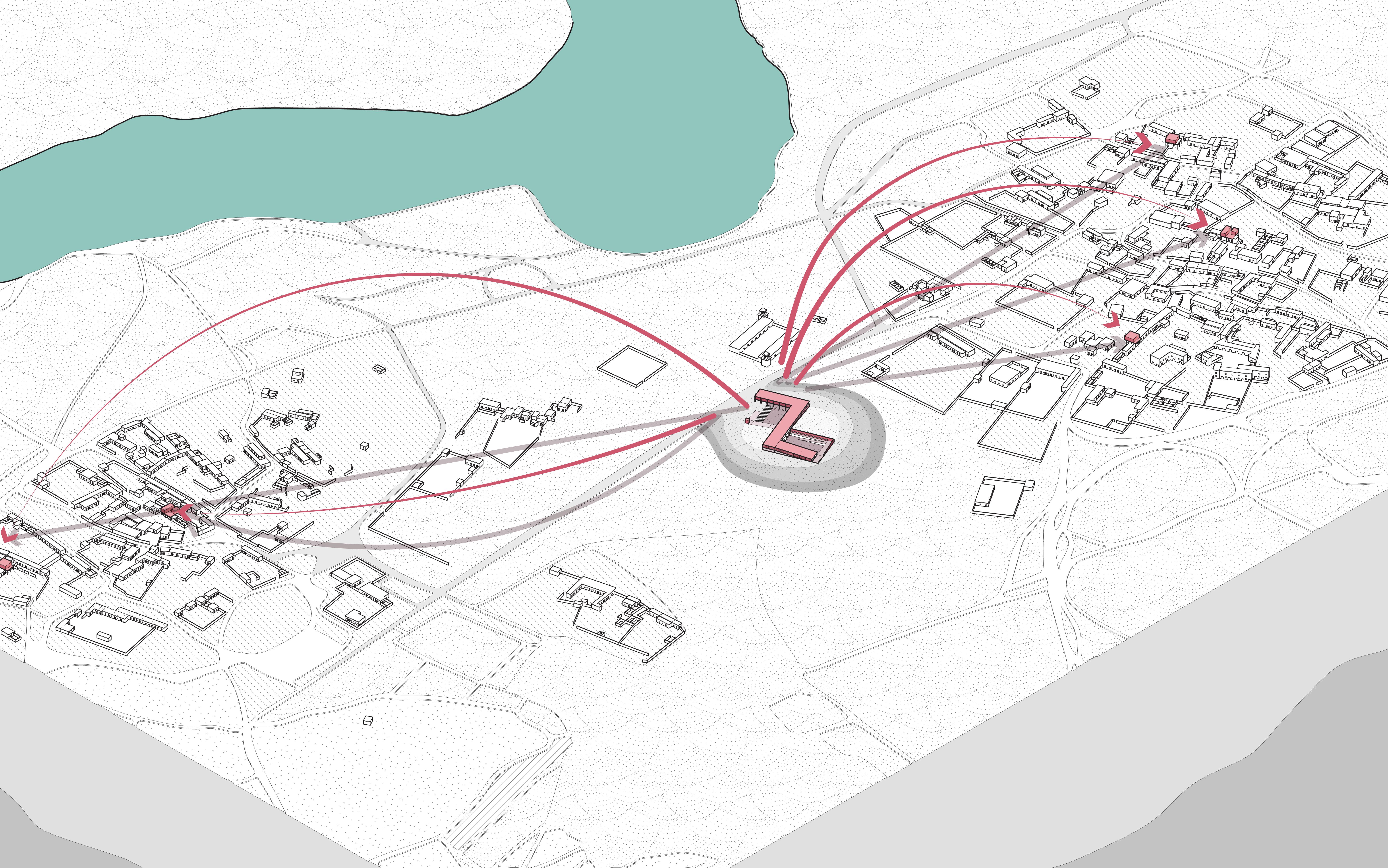
Phase 1 | Shelter Pods
The purpose of these pods is partially to support the size of the residents in the village during an emergency but also to emphasize the importance of women and women coded spaces in a somewhat repressive society. Women rarely occupy the public sphere in rural Balochistan. Even within the home, they are relegated to the furthest corner of the house, referred to as the “purdah,” which directly translates to “curtain or veil.” These pods in the most direct way, address this by siting themselves directly over the “purdah” or the women’s sitting room.
The structure of these pods is developed from existing familiar systems used to make local beds known as “charpais.” However, in the case of the pods, the structural system also consists of prefabricated columns and beams but is reinforced with purlins that can be substituted with found sticks. This centering around the charpai and its dimensions also define the grid of the Vocational Centre/Emergency Shelter building as a 5mx5m grid that can fit at least 2 charpais in it at a time.
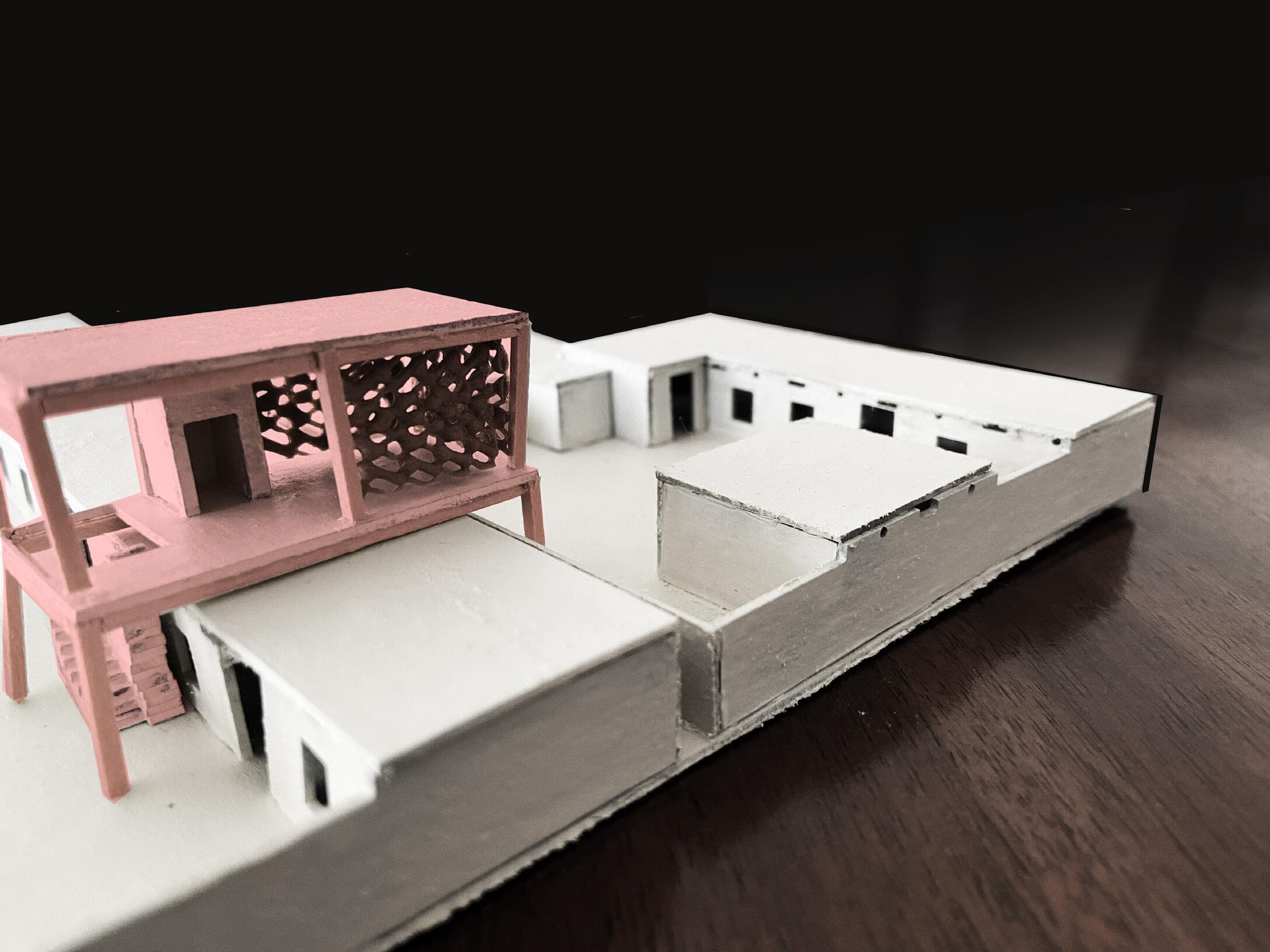
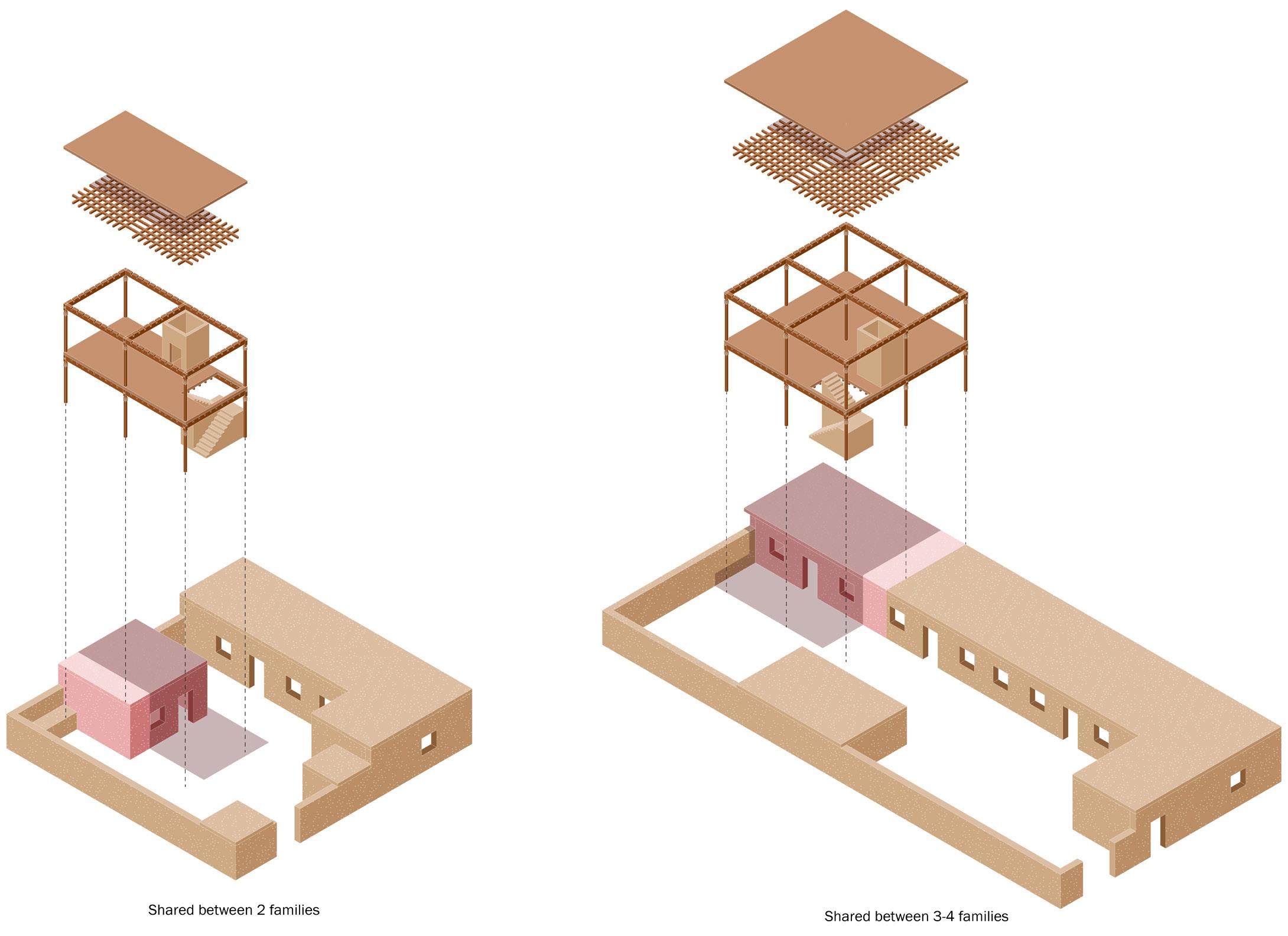
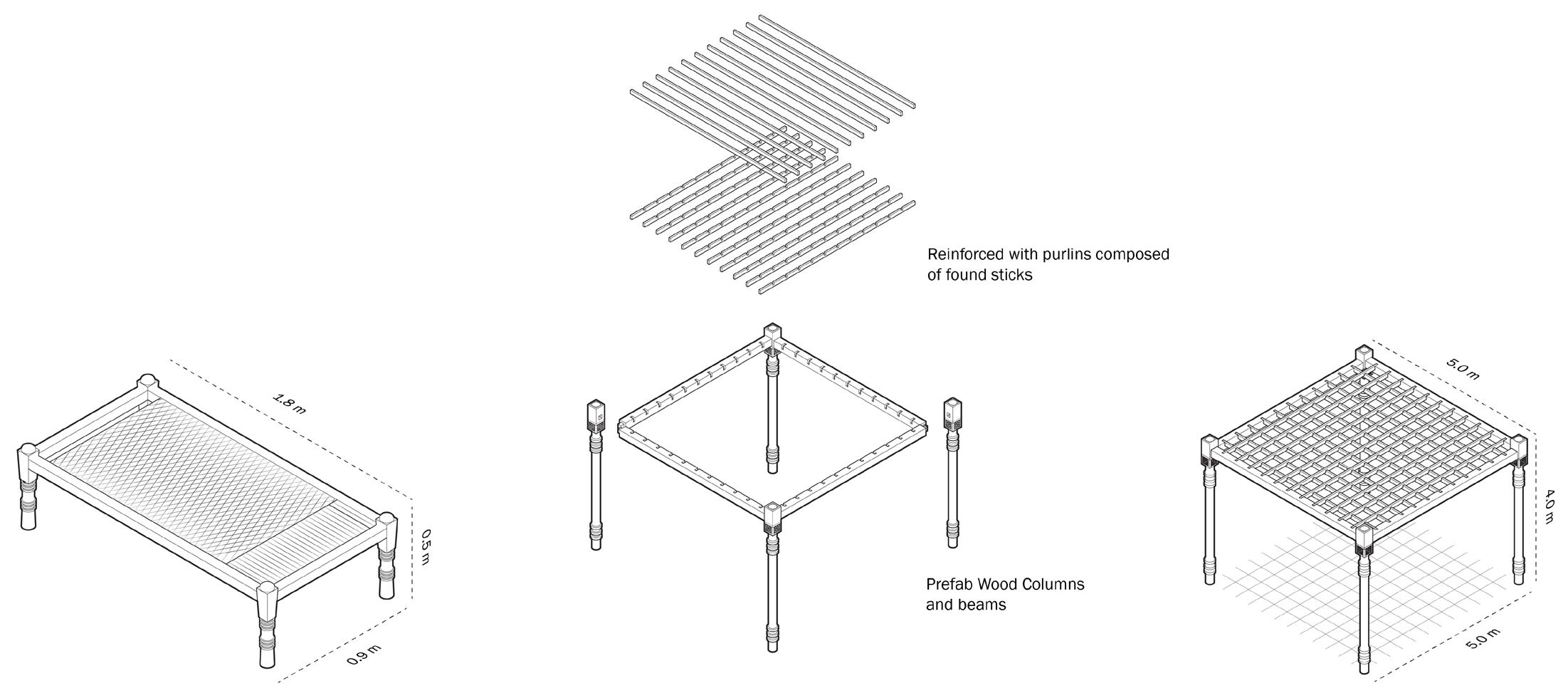
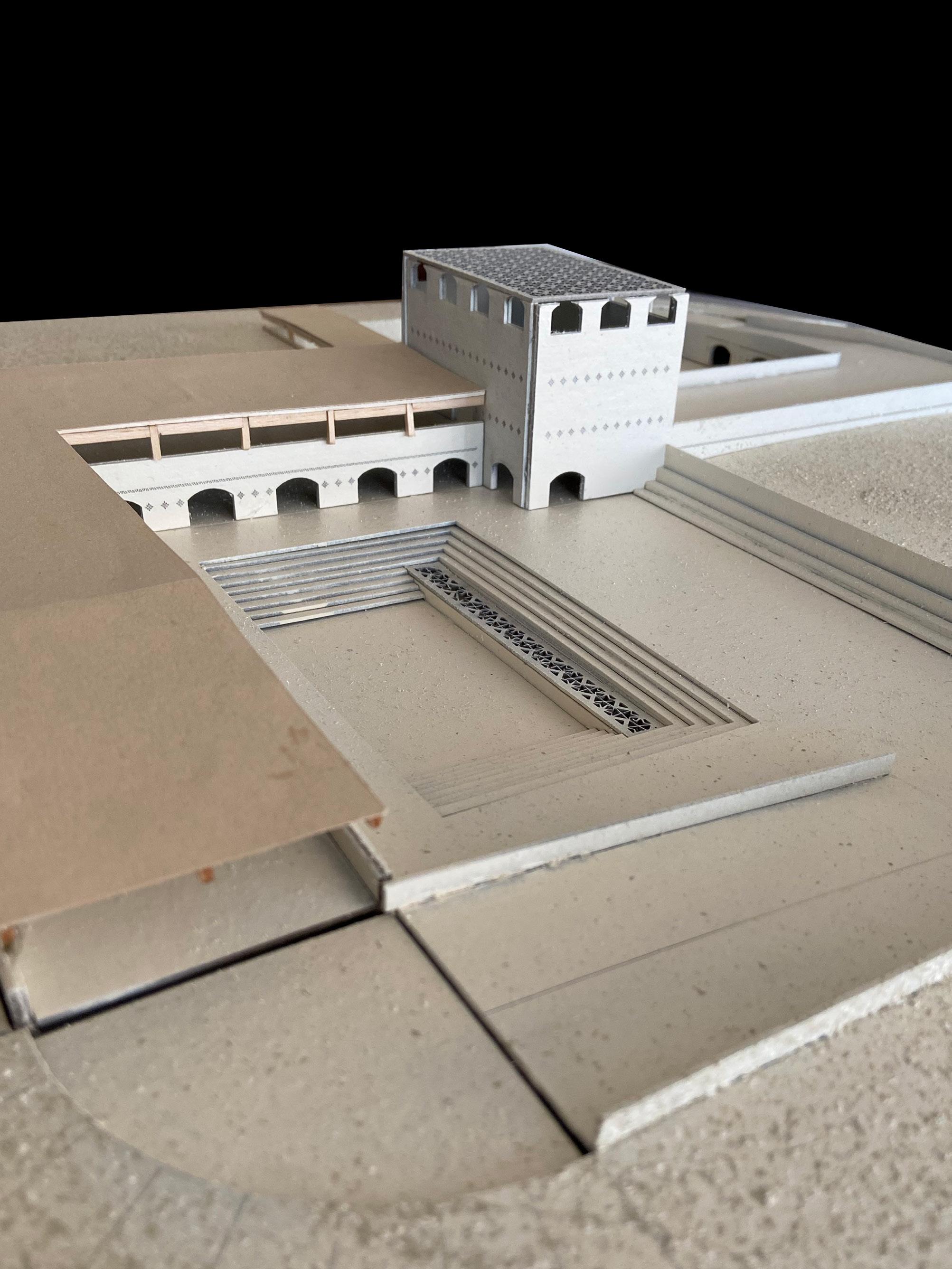
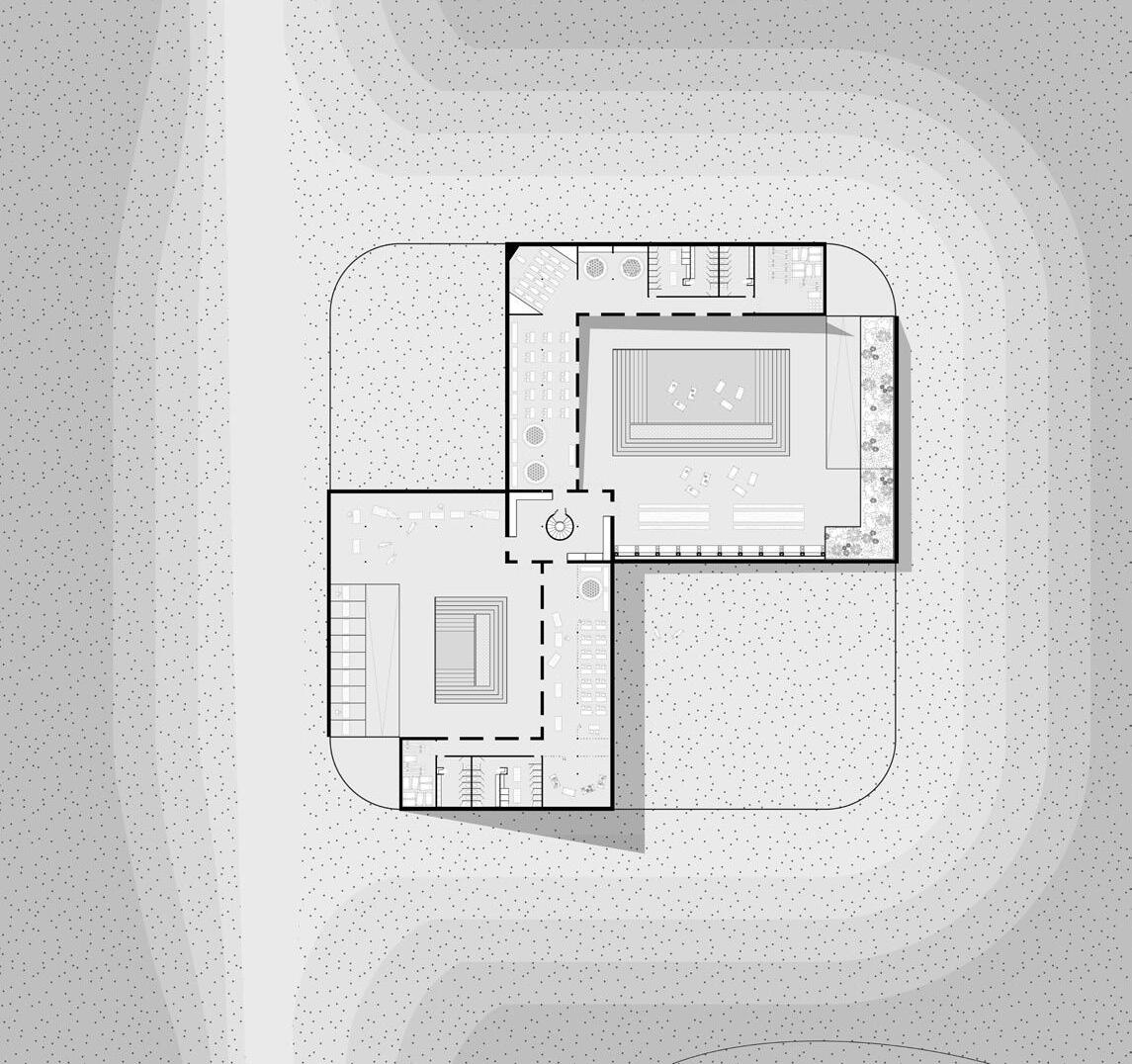
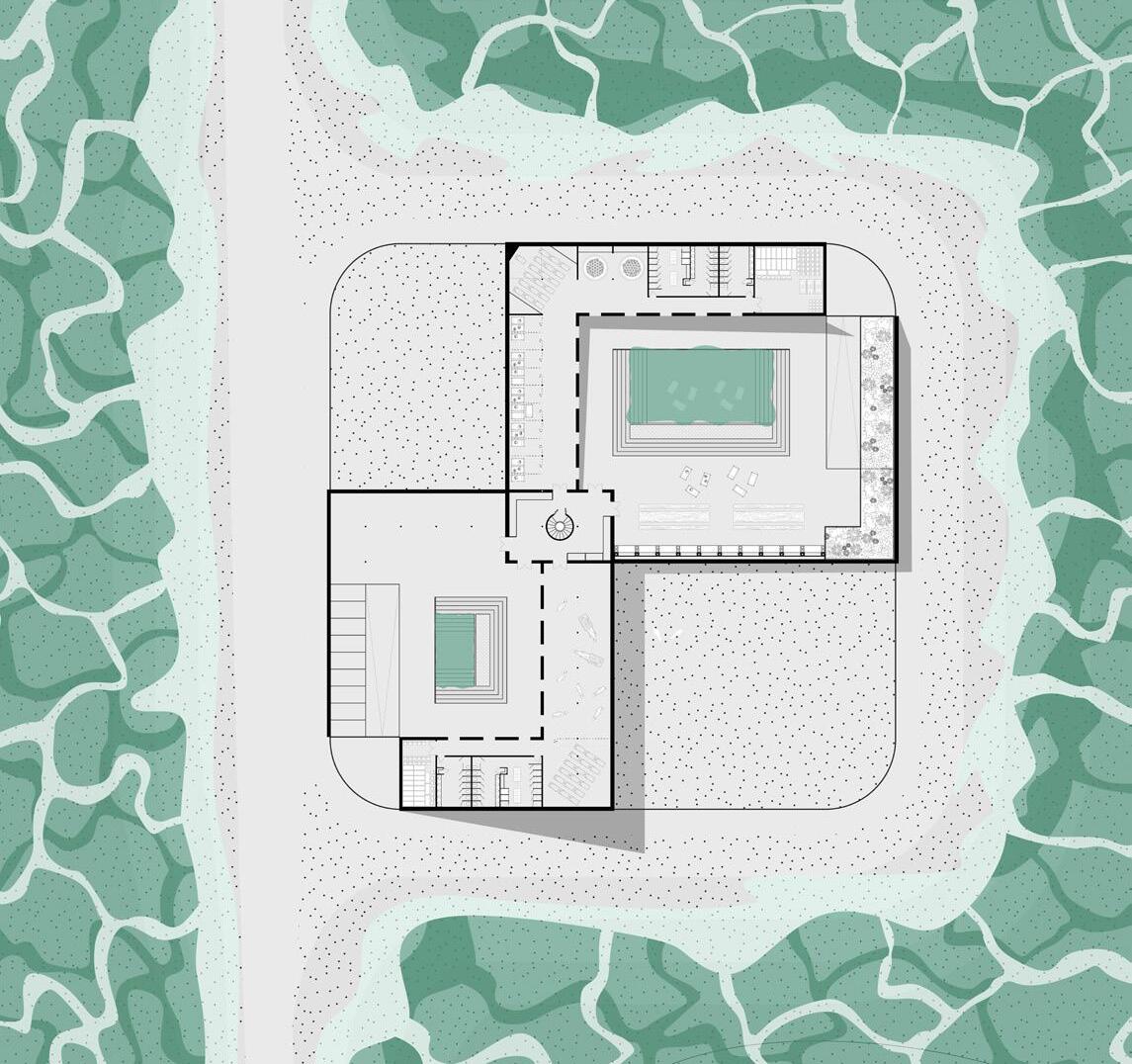
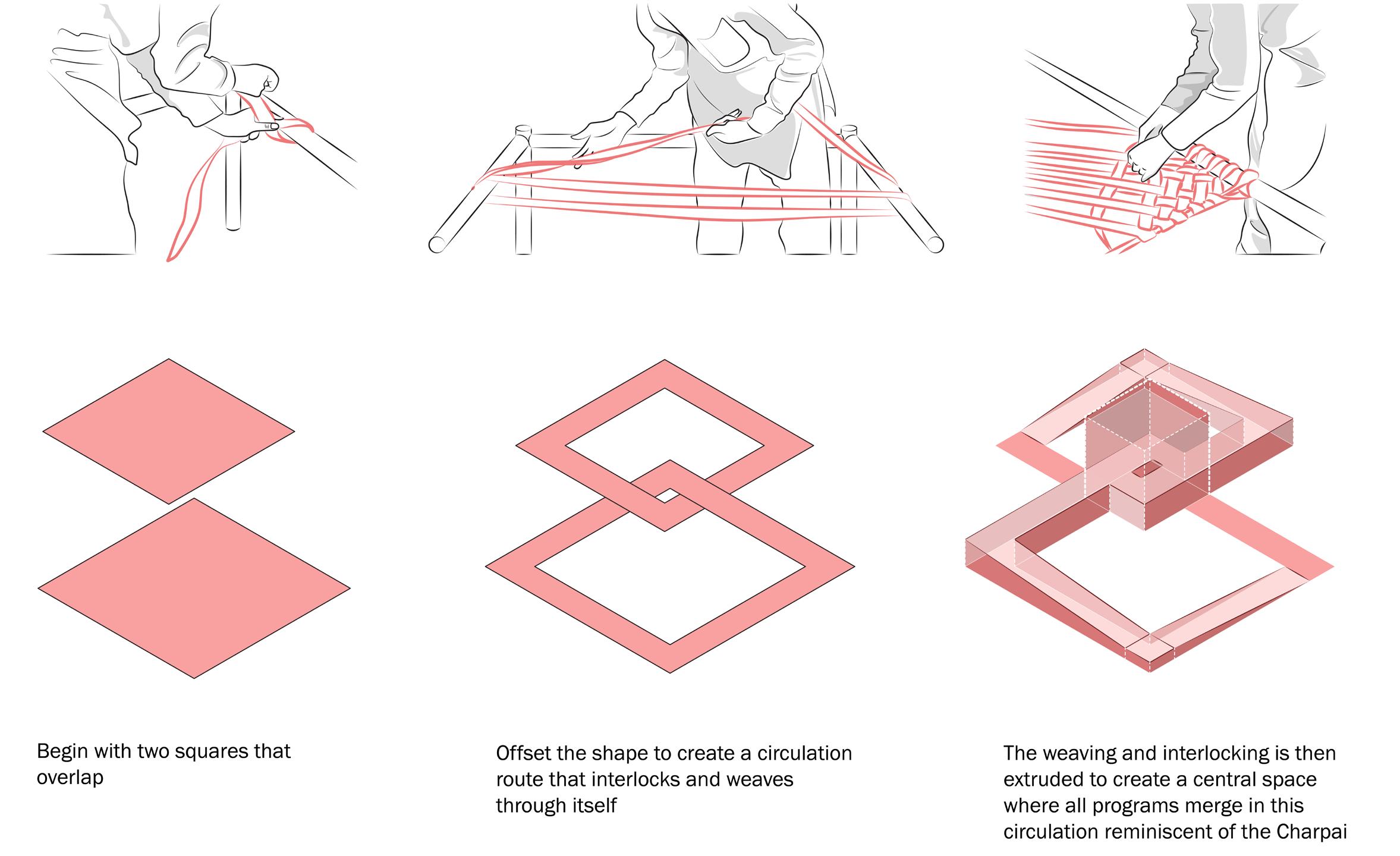
The form was derived from the weaving of the charpai to create two interlocking squares. The logic defining these interlocking squares and the looping circulation is a product of the three focus areas: food, embroidery and storytelling - all things tied to the survival of this village during and outside flood season
Food
In the case of the food, entry from the women’s area leads one through the herb garden, outdoor kitchen and dining, into this tower that can lead you up to the grain storage where additional food is stored in case of an emergency, back down and out through the public courtyard, where some of this food can actually be sold and shared in this outdoor market space
Storytelling and Learning
The final loop consists of storytelling and education, where each section of the building consists of training and education areas. The men and women’s classrooms are initially separate. The two journeys meet at the top most level which is modeled after a minaret. Minarets are a part of mosques from which the call to prayer is heard. However, this “minaret” is used in a slightly different way. Here, it is instead used to tell stories and lullabies where everyone occupying the space can hear. Traditionally, in Pakistan, mosques arent the most welcoming spaces for women and this is an attempt to invert that.
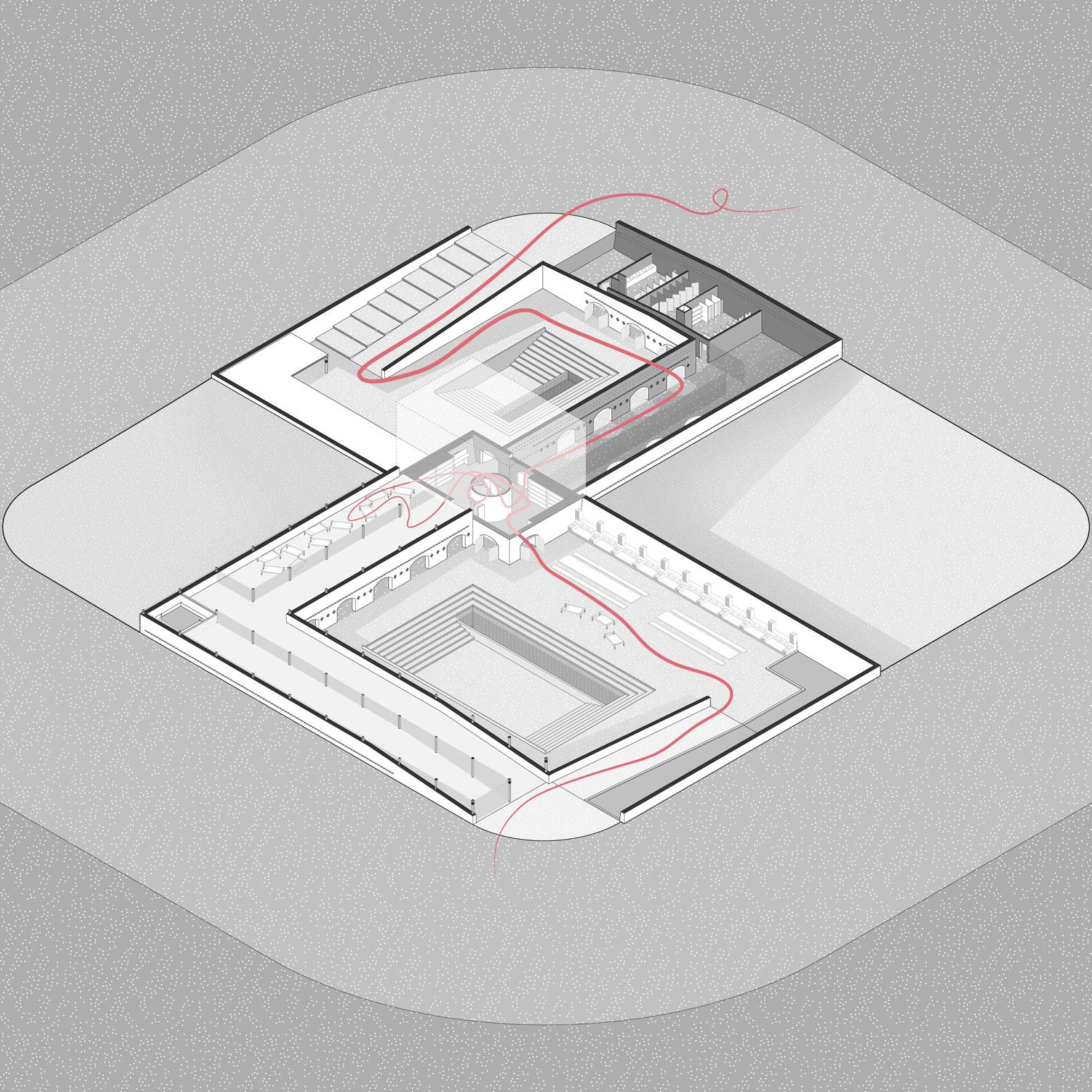
Embroidery
The embroidery loop consists of raw material for example cloth coming in from this public courtyard, being stored in this central space on the ground level, then being taken up to the shared work spaces upstairs, embroidered and then stored back downstairs in the central space or either sold in this local indoor market or taken beyond to be sold through the larger network.
